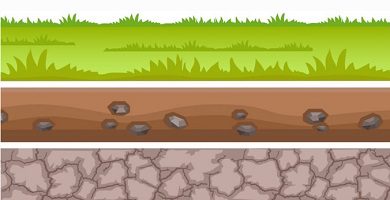Algebra History With Definition, Algebraic Language, Expressions And Branches
We explain what algebra is, algebra history, branches and what it is for. In addition, language and algebraic expressions.
-
What is algebra?
Algebra is one of the main branches of mathematics . Its object of study is abstract structures operating in fixed patterns, within which there are usually more than numbers and arithmetic operations: also letters, which represent concrete operations, variables , unknowns or coefficients.
Put more simply, it is the branch of mathematics that deals with operations with and between symbols , usually represented by letters. Its name comes from the Arabic al-ŷabr (“reintegration” or “recomposition”).
Algebra is one of the branches of mathematics that have the greatest applications. It allows to represent the formal problems of everyday life. For example, equations and algebraic variables allow calculating unknown proportions .
The logic , pattern recognition and reasoning inductive and deductive are some of the mental skills required, it promotes and develops.
-
Algebra History

Algebra was born in Arab culture, around 820 AD. C. , date on which the first treaty was published: Al-kitāb al-mukhtaṣar fī ḥisāb al-ŷarabi waˀl-muqābala , that is, “Compendium of calculation by reintegration and comparison”, the work of Persian mathematician and astronomer Muhammad ibn Musa al-Jwarizmi, known as Al Juarismi.
There the sage offered the systematic solution of linear and quadratic equations, using symbolic operations. These methods were then developed in the mathematics of medieval Islam and made algebra an independent mathematical discipline , together with arithmetic and geometry.
These studies eventually made their way to the West. Thanks to them, abstract algebra emerged in the 19th century , based on the consolidation of complex numbers during the previous centuries, the result of thinkers such as Gabriel Cramer (1704-1752), Leonhard Euler (1707-1783) and Adrien-Marie Legendre ( 1752-1833).
-
What is algebra for?
Algebra is extremely useful in the field of mathematics, but it also has great applications in everyday life. It allows to carry out budgets , billing, calculations of costs , benefits and profits .
In addition, other operations of importance in accounting , administration and even engineering, are based on algebraic calculations that handle one or more variables, expressing them in logical relationships and detectable patterns.
Algebra management allows individuals to better deal with complex and abstract concepts , expressing them in a more simple and orderly way through algebraic notation.
-
Algebra Branches
The main ramifications of algebra are two:
- Elementary algebra . As the name implies, it includes the most basic precepts of the subject, introducing in arithmetic operations a series of letters (symbols) that represent unknown quantities or relationships. This is, fundamentally, the management of equations and variables, unknowns, coefficients, indices or roots.
- Abstract algebra . Also called modern algebra, it represents a greater degree of complexity with respect to the elementary one, since it is dedicated to the study of algebraic structures or algebraic systems, which are sets of operations associable to elements of a group of recognizable pattern.
-
Algebraic language
Algebra requires, first and foremost, its own way of naming its statements, distinct from arithmetic language (composed only of numbers and symbols), appealing to traditional and complex relationships, variables and operations.
It is a more synthetic language than arithmetic, which allows to express general relationships through short sentences . It also allows to include in the formal pattern those terms that we still do not know (the variables) but whose link with the rest is known.
Thus the equations arise, for example, whose form of resolution implies the reordering of the algebraic terms to go “clearing” the unknown.
-
Algebraic expressions

Algebraic expressions are the way to write algebraic language . In them we will recognize numbers and letters (variables), but also other types of signs, and arrangements, such as coefficients (numbers before a variable), degrees (superscripts) and the usual arithmetic signs. In general, algebraic expressions can be classified in two:
- Monomials . An algebraic expression alone, which has in itself all the information that is required to solve it. For example: 6X 2 + 32 and 4 .
- Polynomials . Chains of algebraic expressions, that is, chains of monomials, which have a global meaning and must be solved together. For example: 3n5y 3 + 23n 5 y8z 3 – π 2 3n – 22 + 26n 4 .





